Kaliningrad Oblast - Overview
Kaliningrad Oblast is the westernmost federal subject of Russia located on the Baltic coast, part of the North-West Federal District. Kaliningrad is the capital city of the region.
The population of Kaliningrad Oblast is about 1,028,000 (2022), the area - 15,125 sq. km.
History of Kaliningrad Oblast
Since the 5th century, the territory of the present Kaliningrad region was inhabited by the Prussian tribes, the people related to today’s Lithuanians and Latvians. After the adoption of Christianity by Poland (966), active attempts to Christianize the Prussians began.
In 1206, the Pope Innocent III issued a bull on the Christianization of the Prussians, and, in 1217, the Pope Honorius III declared a campaign against the Prussian pagans that became part of campaigns in East Prussia, known as the Prussian Crusade. In 1226, the Teutonic Order joined the crusade.
In 1230, the Pope gave the Teutonic Order the right to baptize the Prussians. The German crusaders began to colonize new territories, which soon became a state of the Teutonic Order. The colonization was not peaceful - a considerable part of the Prussian leaders fought against the crusaders, other leaders accepted Christianity.
During the invasion, which lasted about 50 years, knights built a number of castles. The first castle was Balga founded on the coast of Vislinsky (Kaliningradsky) Bay in 1239. The Germans settled near the walls of the castles. Most of the towns in the region including Konigsberg (Kaliningrad) appeared this way.
More Historical Facts…
The state of the Teutonic Order occupied the territory of present Kaliningrad oblast as well as Varminsko-Mazursky province of today’s Poland. It was in constant confrontation with Poland and Lithuania. In the second half of the 15th century, it became dependent on Poland.
In 1525, by the order of the Grand Master Albreht, the crusaders’ state was reformed into Prussian duchy. Albreht became the first duke of Prussia. Protestantism of Lutheran type became the new state religion. Prussia was the first state in the world that declared Protestantism as its state religion.
In 1657, Prussia became part of the united Brandenburg-Prussian state, Poland lost its influence on Prussia. During the Seven Years’ War, in 1758-1762, East Prussia was part of the Russian Empire. This period was called “the first Russian time” in German chronicles.
After the Second World War, according to the Potsdam Agreement, the northern part of East Prussia became part of the Russian Soviet Federative Socialist Republic within the USSR. It was called Konigsberg Oblast. But this name didn’t last long. In 1946, it was renamed after the Soviet leader Mikhail Kalinin.
In 1946-1948, during the resettlement campaign, thousands of people from dozens of regions of the USSR came for permanent residence in Kaliningrad Oblast (mainly collective farmers and agricultural workers). The German population was forcibly deported to Germany by 1947.
Kaliningrad Oblast became one of the most militarized regions of the USSR. The main headquarters of the Baltic Fleet was located in Kaliningrad. After 1991, the town of Baltiysk (former Pillau) remained the largest base of the Baltic Fleet of Russia.
Nature of Kaliningrad Oblast
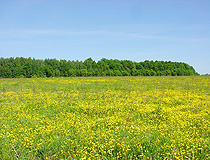
Flowering meadow in the Kaliningrad region
Author: Oleg Rylin
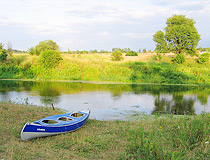
On the bank of a small river in Kaliningrad Oblast
Author: Oleg Alferov
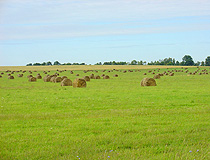
Kaliningrad Oblast scenery
Author: Oleg Rylin
Kaliningrad Oblast - Features
Kaliningrad Oblast is located in Central Europe. In the south it borders with Poland, in the north and east - with Lithuania. In the west the region is washed by the Baltic Sea. After the collapse of the Soviet Union, it became a half-exclave of Russia, as it has no land border with the mainland, but it is connected to it by sea.
The largest cities of Kaliningrad Oblast:
- Kaliningrad (former Konigsberg, 498,000),
- Sovetsk (former Tilsit, 38,500),
- Chernyakhovsk (former Insterburg, 35,300),
- Baltiysk (former Pillau, 34,300),
- Gusev (former Gumbinnen, 27,600).
The maximum length of the region from west to east is 205 km, from north to south - 108 km. The largest rivers are the Neman and Pregel. The climate is transitional from maritime to temperate continental. The average temperatures in January - minus 3-5 degrees Celsius, in July - plus 15-17 degrees Celsius.
This region is also called “Yantarny krai” meaning “the amber region” because it has about 90% of the world reserves of amber. Today, several hundred tons of amber is mined annually, but not much of it is used for the production of jewelry in the region.
The following industries are developed in the Kaliningrad region: machine-building, ship-building and repairing, car assembling, production and assembling of gadgets, production of building materials, food industry, wood processing and furniture-making. Fishing is also well developed.
About 90% of residents of Kaliningrad Oblast have international passports, about 30% have Schengen visas. An international passport is issued free of charge to the locals because it is a forced necessity: without passports people can’t get visas and without visas they can’t go to Russia by rail that passed through the territory of Lithuania.
Tourism in Kaliningrad Oblast
Tourism is one of the priority sectors of the economy of the Kaliningrad region (maritime climate, healing mineral water, therapeutic peat mud, sandy beaches, two freshwater bays, rivers, lakes (Lake Vistytis), sand dunes (the Curonian Spit, Vistula Spit).
The main resorts of Kaliningrad Oblast:
- Svetlogorsk (former Rauschen),
- Zelenogradsk (former Kranz),
- Pionersky (formerly Neukuhren),
- The village of Otradnoye.
Also there is a significant amount of historical monuments of the Teutonic Order and the Prussian periods on the territory of the region - the ruins of castles and churches, remains of ramparts and fortifications.
Old small towns of the Kaliningrad region can be of great interest to tourists too. Sovetsk, former Tilsit, has retained its historic architectural plan. It has a large number of monuments and places of interest. In 1807, Napoleon and Alexander I signed the famous Treaty of Tilsit here. This town is also home to Tilsit cheese, one of the most popular types of cheese in the world.
In the north of the region you can find a unique hydrographic object - the Curonian Spit. It is a long and narrow strip of sandy land that has a form of a saber, separating the Curonian Bay from the Baltic Sea. The length of the spit is 98 kilometers. In 2000, the Curonian Spit was included in the UNESCO World Heritage List.
Thanks to a dense network of roads traveling by car is the most convenient way to explore the region. It should be noted that many roads are quite narrow, winding and have the speed limit of 70 kilometers per hour because of the trees growing along them.


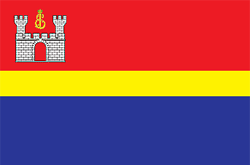
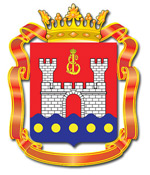
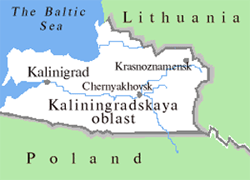



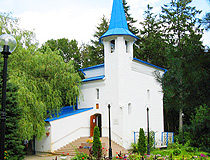
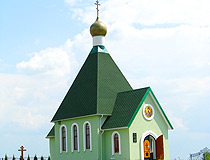
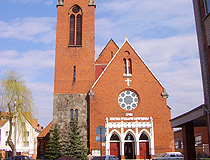
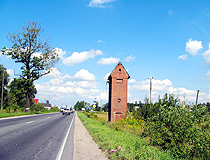
The comments of our visitors